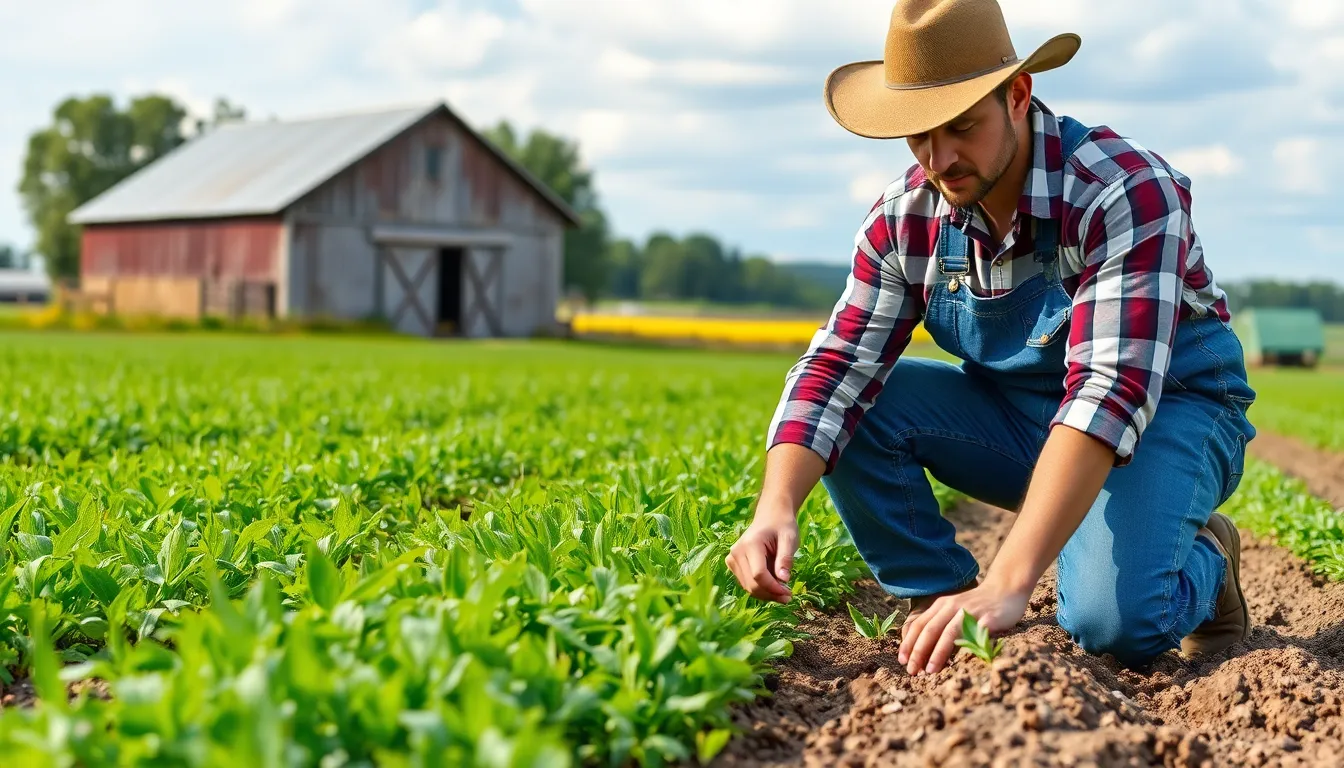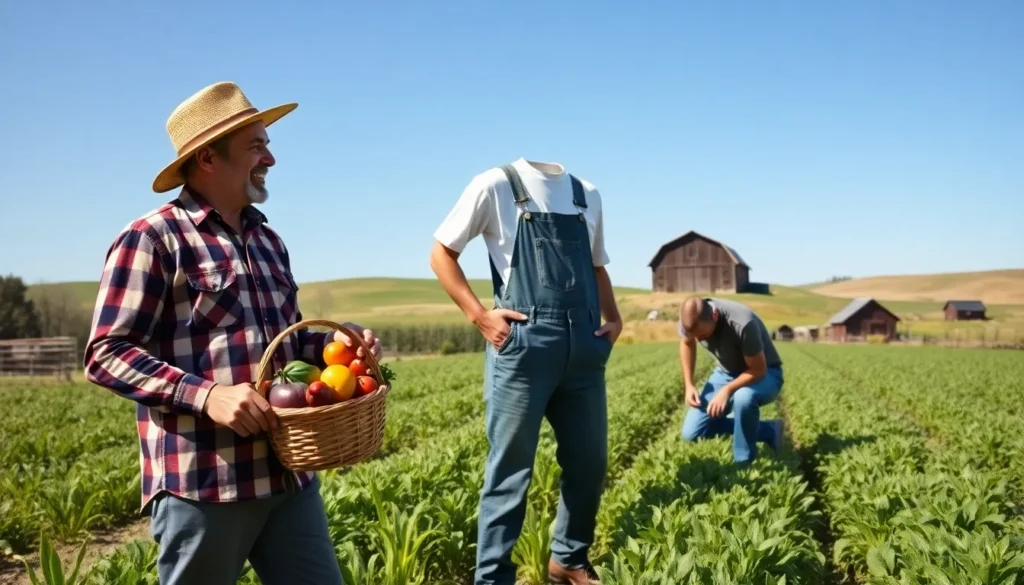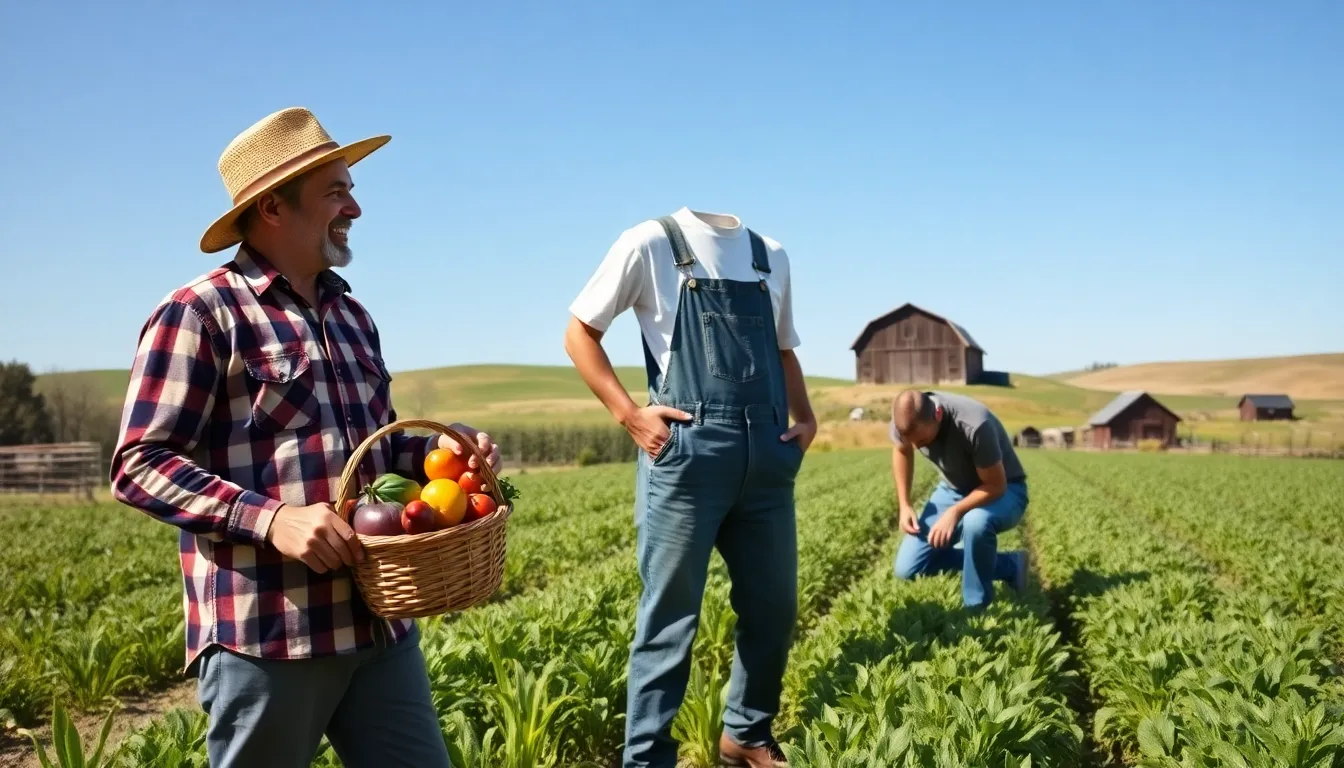Imagine trading your city’s hustle and bustle for the peaceful rhythm of farm life, all from the comfort of your couch. Farming simulator RPGs let players dive into a world where they can plant crops, raise livestock, and even manage their very own virtual farm. It’s like a vacation to the countryside without the pesky mosquitoes or the need for sunscreen.
Table of Contents
ToggleOverview of Farming Simulator RPG
Farming simulator RPGs provide an immersive escape into rural life, allowing players to cultivate crops and care for animals. These games often feature a variety of farming activities, appealing to those who enjoy a detailed and engaging agricultural experience. Players engage in tasks such as planting seeds, harvesting produce, and breeding livestock, each contributing to the growth of their virtual farm.
Exploration plays a significant role in these games, enabling players to discover new landscapes and environmental features. Customization options empower users to tailor their farms to reflect personal preferences, from layout designs to crop selections. Many titles offer seasonal changes, creating dynamic gameplay that requires strategic planning and adaptability.
Economic management often forms an essential aspect of farming simulator RPGs. Players must handle finances by buying equipment and selling produce in markets, emphasizing the importance of resource allocation and skillful decision-making. Challenges, such as weather effects or pest invasions, add layers of complexity and realism.
In multiplayer modes, collaboration enhances the farming experience. Players can team up, share resources, and participate in cooperative missions. The social aspect fosters community building, inviting interaction and camaraderie among participants.
Through varied gameplay mechanics, farming simulator RPGs deliver an enjoyable blend of relaxation and challenge. Attention to detail in graphics and sound design further immerses players in their virtual farming endeavors. Engaging narratives often accompany game developments, providing context and purpose to farming tasks.
Gameplay Mechanics

Farming simulator RPGs include various engaging mechanics that enhance the gaming experience. Players dive into character development and farming techniques that shape their virtual lives.
Character Development
In farming simulator RPGs, character development plays a vital role. Players create and customize avatars, selecting features like clothing and skills. Skills often tie to farming tasks, enhancing efficiency in planting, harvesting, or managing livestock. Progressing through levels unlocks new abilities, allowing for improved gameplay. Relationships with NPCs also add depth, contributing to community dynamics and providing mission opportunities. Engaging in quests or mini-games further boosts character growth, encouraging exploration and interaction within the game world.
Farming Techniques
Farming techniques are central to gameplay, where players implement diverse strategies. Crop rotation improves soil health and yield, balancing different plant types for optimal growth. Irrigation methods ensure water efficiency, crucial for maximizing resource use. Players often experiment with various fertilizers, enhancing crop quality and quantity. Livestock management emphasizes breeding and feeding, influencing products like milk and eggs. Seasonal strategies require adaptability, necessitating planning for different weather conditions. Adopting innovative farming tools streamlines tasks, ensuring a smooth and rewarding farming experience.
Graphics and Sound Design
Graphics play a significant role in the immersive experience of farming simulator RPGs. Players encounter vibrant landscapes, detailed farm equipment, and realistic animals that enhance the feeling of rural life. A variety of visual styles caters to different preferences, ranging from realistic to stylized graphics.
Textures add depth, making crops and environments visually appealing. Seasonal transitions are often depicted with striking changes in foliage and weather effects. These elements not only create a sense of time but also influence gameplay strategies.
Sound design complements the graphics, bringing the farming world to life. Ambient sounds such as birds chirping, livestock sounds, and wind rustling through crops elevate the realism. Music often reflects the tranquil countryside, enhancing the overall atmosphere.
Voice acting may also contribute to interactions with NPCs, providing emotional depth to quests and community dynamics. Sound cues signal harvest times or when crops are ready, guiding players in managing tasks effectively.
Together, the graphics and sound design forge an engaging environment. Immersive visuals and rich audio create a balance that captivates players. As they cultivate their virtual farms, these elements contribute to the satisfaction of a well-managed farm experience.
Community and Multiplayer Features
Multiplayer modes in farming simulator RPGs significantly enhance user interaction. Players collaborate to tackle challenges, sharing resources and expertise effectively. Teamwork fosters a sense of community, enriching the gameplay experience.
Community features often include online forums and in-game chat systems. These platforms allow players to exchange tips, discuss strategies, and share farming techniques. Engaging with fellow enthusiasts creates a vibrant ecosystem that nurtures player relationships.
Seasonal events introduce competitive elements, offering players opportunities to participate in contests. These events typically include crop competitions and livestock shows, encouraging friendly rivalry among participants. Achievements in such contests lead to valuable rewards, enhancing overall gameplay.
Cooperative missions promote teamwork, allowing players to combine efforts in achieving common goals. Completing tasks together, such as large-scale harvests or community projects, strengthens bonds within the player community. Shared success often leads to lasting friendships beyond the game.
Custom farms provide another layer to community interactions. Players can showcase their unique farming styles, leading to admiration and inspiration. Tours of customized farms encourage creativity and innovation, promoting a diverse gaming environment.
Online leaderboards track player progress, adding a competitive edge to farming simulation experiences. Each player’s achievements are visible, motivating others to strive for improvement. This feature cultivates an engaging atmosphere where players can stay motivated and involved.
Social media integration allows easy sharing of in-game accomplishments and farm updates. Players often post screenshots or videos, showcasing their farms or completed missions. Such sharing fosters excitement and draws in new players, expanding the community further.
Pros and Cons of Farming Simulator RPG
Farming simulator RPGs present a range of advantages and disadvantages. On the positive side, these games offer players a relaxing escape into farm life, allowing them to manage crops and livestock at their own pace. Immersive graphics create a visually stunning environment that draws players into the experience. Engaging with NPCs enhances gameplay depth through relationships that lead to missions and community-building interactions.
Strategic planning becomes essential due to seasonal changes that challenge players to adapt their farming techniques. Multiplayer modes foster collaboration, enabling players to work together on tasks and share resources. Economic management is a key component, sharpening players’ decision-making skills as they navigate purchasing equipment and selling products.
Conversely, players may encounter some drawbacks. Time investment can become significant, especially when balancing various farming tasks. Technical issues may arise, such as bugs that disrupt gameplay and detract from the overall experience. Realism sometimes leads to frustration, especially when dealing with unpredictable weather effects or pest problems that hinder progress.
Additionally, the complexity of some game mechanics may overwhelm newcomers. Learning curve variations can affect enjoyment, as some players may find it challenging to grasp the extensive options available. Despite these challenges, many find the opportunity for creativity and customization within their farms captivating.
Overall, the pros and cons of farming simulator RPGs offer a balanced view, highlighting their ability to provide relaxation alongside strategic challenge. This blend continues to engage players and keeps them coming back for more rural adventures.
Conclusion
Farming simulator RPGs offer a unique blend of relaxation and strategic challenge that appeals to a wide range of players. Their immersive environments and engaging gameplay mechanics allow individuals to escape into a world of agriculture and community.
The combination of economic management and character development enriches the experience, while multiplayer features foster collaboration and competition. Despite some challenges like time investment and a learning curve, the creativity and customization opportunities keep players coming back for more.
Ultimately, these games provide not just a virtual farming experience but also a chance to cultivate skills and relationships, making them a rewarding choice for anyone looking to enjoy the tranquility of farm life from the comfort of their home.






